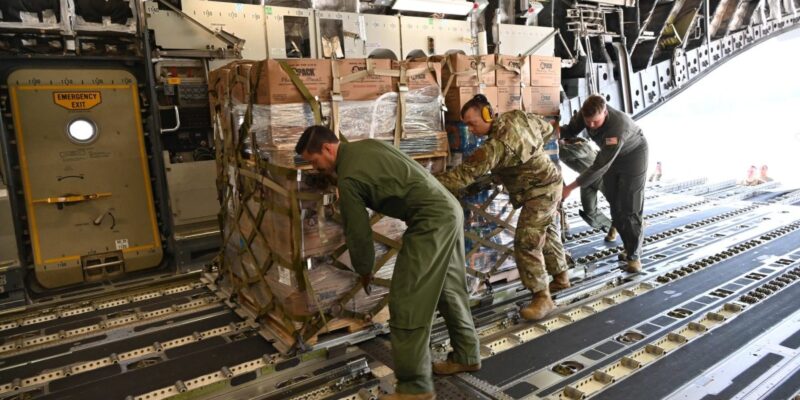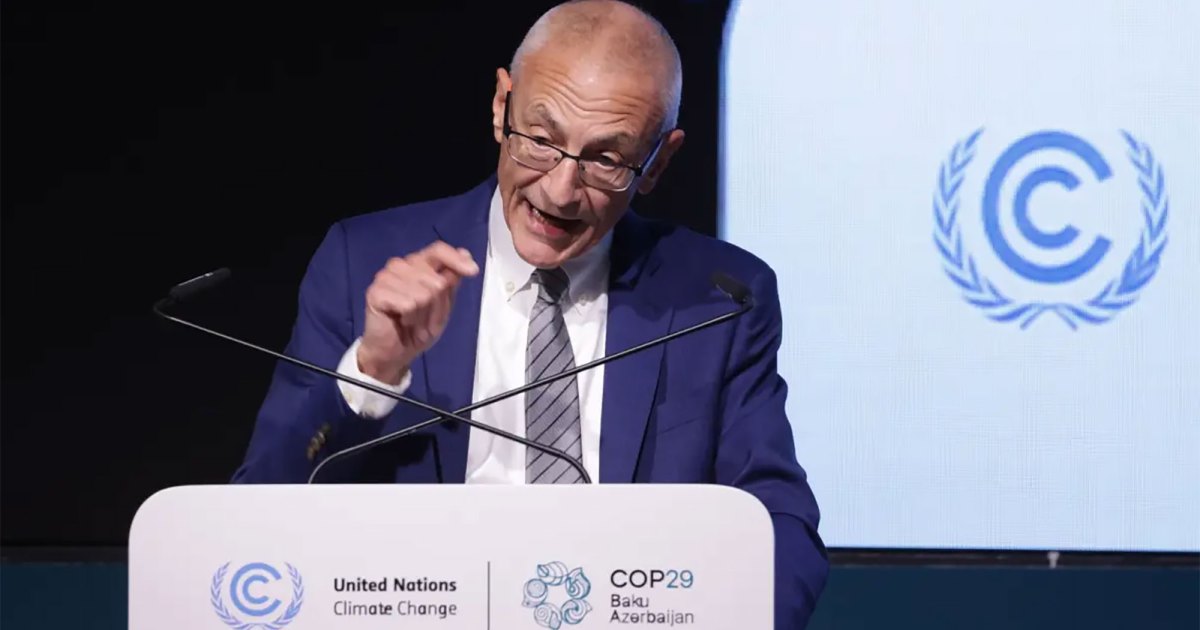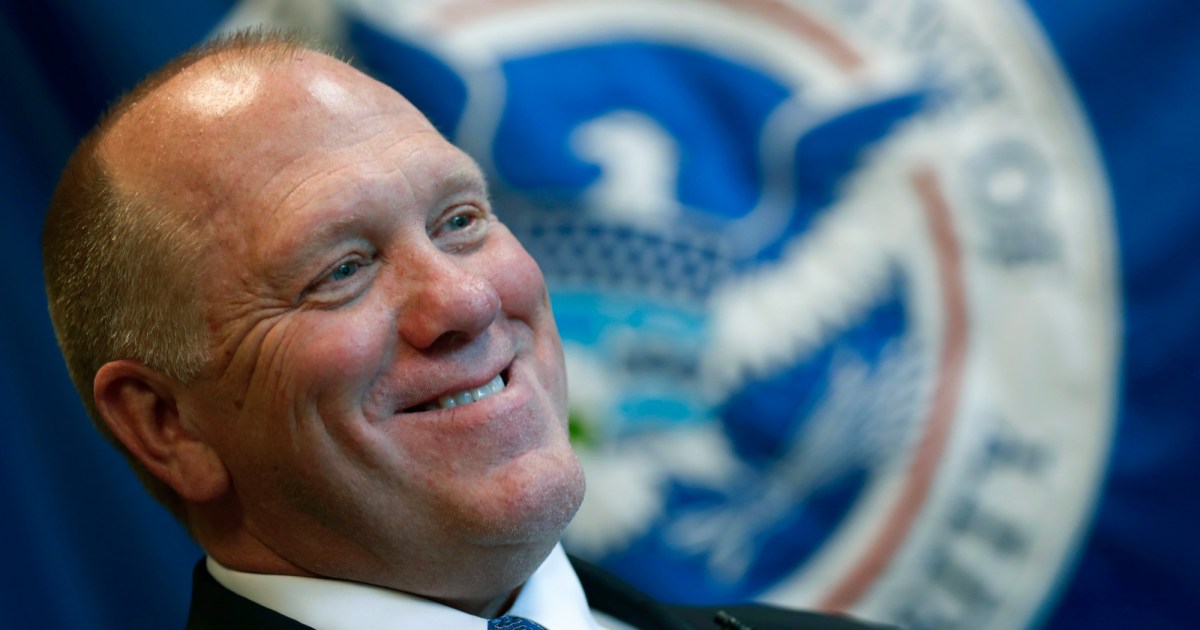
This story is part of an ongoing investigation into disinformation in collaboration with The War Horse, the Human Rights Center at the University of California, Berkeley, and the Center for Investigative Reporting, which produces Mother Jones and Reveal.
Perhaps nothing illustrates the power of misinformation in the United States better than what happened Monday morning when retired Army Lt. General Michael Flynn hit the send button on a social media post. He shared a video that claimed “weather modification operations” that are “clearly connected” with the Department of Defense were responsible for Hurricane Helene’s “assault” on the Carolinas.
“You have to listen to this clip,” Flynn told his 1.7 million followers on X. “Another ‘conspiracy theory’ about to be exposed for the truth behind weather manipulation?”
Within 15 hours, the post by former President Donald Trump’s onetime national security adviser had more than half a million views. Add that to the 43 million views of alt-right Georgia Rep. Marjorie Taylor Greene’s claims late last week that “Yes they can control the weather.”
Now compare that to the post by the Poynter Institute’s PolitiFact immediately debunking the weather modification theory with its most untruthful “Pants on Fire!” rating a day after Helene made landfall: After 10 days, that post had all of 11,400 views—less than 2 percent of Flynn’s audience.
With the storm-battered Southeast bracing for another massive hurricane and the hyperpartisan election just four weeks away, government officials and rescue workers aren’t just battling the elements, they’re fighting against a spiraling misinformation war.
“The combination of the two just makes the misinformation even more drastic,” says Josephine Lukito, a professor at the University of Texas at Austin’s School of Journalism and Media who studies misinformation. “There’s more misinformation, and people seem to be falling for it more.”
“There’s more misinformation, and people seem to be falling for it more.”
Many of the false narratives involve the military, which is so often at the heart of conspiracy theories—hiding evidence of UFOs at Area 51 or working with Trump to take down a cabal of Satan-worshipping global elites. But the claims circulating in the wake of Helene and the buildup to Hurricane Milton have been more immediate, more personal: The military doesn’t want to help you.
In fact, it may want to harm you.
Almost as soon as Helene made landfall September 26, a narrative started spinning up on social media: The government had botched the response to the storm—on purpose.
While much of the false information focused on the Federal Emergency Management Agency’s response, dark narratives about the military also circulated, spread by far-right influencers and military veterans alike.
In the immediate aftermath of the hurricane, more than 6,000 National Guard members were activated for search and rescue and to help clean up the wreckage. But online, people posted that they hadn’t seen guard members in their neighborhood. In a disaster the size of Helene, rescuers can’t be everywhere at once. But online, posters began to circulate the false idea that maybe the guard wasn’t deployed at all.
And Fort Liberty, the US Army’s largest military base, home to the famed 82nd Airborne Division, is in North Carolina, mere hours from some of the state’s hardest-hit areas. Some conspiratorial posts asked why soldiers from the base weren’t immediately mobilized. Active-duty troops typically do not deploy as first responders to natural disasters.

In the social media ecosphere—on alt-tech platforms like Rumble, Gab, and GETTR, as well as more mainstream sites like X—these questions quickly coalesced into a grab bag of conspiracy theories. The military wasn’t deploying soldiers for hurricane response because the Pentagon decided they would be put to better use in the Middle East or Ukraine instead. President Joe Biden and Vice President Kamala Harris wanted to prevent red-state voters from casting their ballots—or even wanted them dead. The federal government was planning to seize land in western North Carolina for lucrative lithium mining contracts.
None of that was true.
“If troops are being deployed and [people] don’t necessarily see it in their geographic area, this is a ‘Is this really happening?’-type question,” Lukito says.
“There’s a lot of political actors that can take advantage of that.”
On Saturday, Trump amplified the idea that the military had not responded to the hurricane, claiming at a rally in Butler, Pennsylvania, that there had been “no helicopters, no rescue” in North Carolina. That is untrue: The North Carolina National Guard says it has rescued hundreds of people and delivered more than a million pounds of supplies, some of it by helicopter.
But even as top FEMA officials and local sheriffs begged residents to sign up for federal emergency aid while beating back misinformation, a new false narrative was gaining traction online: The military had perfected the science of weather control and was now weaponizing it against conservatives.
“We have an inherent distrust of our government,” says Pablo Breuer, board chair of the counter-disinformation nonprofit Disarm Foundation and a career Navy veteran.
“It’s very easy to stir up fear, uncertainty, doubt, and angst by stoking fear that the military is not really there to protect you. They’re there to oppress you.”
“It’s very easy to stir up fear, uncertainty, doubt, and angst by stoking fear that the military is not really there to protect you. They’re there to oppress you.”
An analysis by The War Horse and the Human Rights Center at the University of California, Berkeley, of 40 different social media platforms found that two days before Greene’s viral “they can control the weather” post, comments connecting the military to weather manipulation spiked on Gab, a social media platform favored by the far right.
“I’d bet my life it was the US Military using their HAARP Technology manipulating the weather to destroy a large portion of Red States and people before the election,” one user wrote, before moving on to antisemitic tropes. The user’s profile featured pro-Russia, white nationalist content.
It’s not a new idea. HAARP—a research program studying the upper atmosphere based at the University of Alaska Fairbanks and initially funded by the military—has long been fodder for conspiracy theorists. Back in January, right-wing agitator and white nationalist Laura Loomer asked on X whether the “deep state” was using HAARP to control the weather when a blizzard threatened turnout for the Iowa caucus. It was not.
“We all know @NikkiHaley has a lot of friends in the defense industry and Military-industrial complex,” she tweeted.
Posts about geoengineering the weather also spiked on other social media sites after Helene. Some of those posts, particularly on more mainstream platforms, pushed back on misinformation, and social media users quickly added context in X’s Community Notes debunking Greene’s viral post.

But views of Flynn’s and Greene’s “weather manipulation” posts dwarfed the number of views on X, for example, of carefully crafted posts from some notable climate scientists about the deadly confluence of extreme weather.
“The fingerprints of #ClimateChange are all over what has transpired in recent weeks and may yet occur in coming days,” Daniel Swain, a climate scientist, posted in a thread Monday.
“There are still thousands of folks in dire need…Helping them is and should remain the primary short-term priority. Yet if we can’t also manage to have the harder conversations regarding natural hazard risk & disasters & climate change in the moments when people are actually paying attention, we’re never going to solve any of the underlying problems.”
Just days before Helene slammed into the state, the Georgia National Guard’s Headquarters Company of the 110th Combat Sustainment Support Battalion prepared for a long-planned nine-month deployment to Poland to support US forces and allies stationed in Europe.
Online, that and other deployments were held up—inaccurately—as proof that the military didn’t want to save American lives.

Images of text messages, ostensibly from National Guard members and active-duty soldiers, began circulating, claiming that troops were ready and willing to deploy to the disaster zone but that “higher ups” weren’t allowing it.

But that’s not how disaster response works, Breuer says.
“We have more than enough troops and equipment to be able to do the things that the military is being asked to do overseas and do the things that we want and need to do at home,” Breuer says. “We’re ready and willing to help anyone at any time.”
But he points out that the military cannot just deploy itself into a disaster zone.
Responding to a natural disaster the scale of Helene is a sprawling effort among local, state, and federal resources, as well as private and nonprofit organizations. Any military response is first provided by the National Guard, which is typically mobilized under state—not federal—control. Governors of affected states can request the support of guard units from other states.
As claims about missing guard troops proliferated online, National Guard units already were mobilizing. Before Helene made landfall, Georgia Gov. Brian Kemp, a Republican, already had authorized 500 guard members to respond to the storm, quickly adding another thousand troops as the storm battered Georgia. That number has since increased to 2,500.
North Carolina Gov. Roy Cooper, a Democrat, initially activated more than 350 National Guard members as the storm moved into the Carolinas and steadily increased that number as the scale of devastation became clear.

In total, more than 6,000 guard members from 18 states have mobilized to provide search and rescue and begin the cleanup effort.
In a news conference Friday, Cooper expressed his frustration with the growing tide of misinformation.
“It can hurt our relief efforts,” he said. “It…demoralizes National Guard soldiers who are out here for days and days and people who are working in emergency management who are working around the clock to help people.”
“It can hurt our relief efforts. It…demoralizes National Guard soldiers who are out here for days and days and people who are working in emergency management who are working around the clock to help people.”
Federal troops can also help with disaster recovery, but it’s not their primary mission—and the military typically doesn’t deploy federal troops without a request from a state governor, says DeeDee Bennett Gayle, chair of the emergency management and homeland security department at SUNY Albany. Often, that comes only after an initial assessment of the damage.
Last Wednesday, Biden announced that 1,000 soldiers from Fort Liberty and Fort Campbell in Kentucky were deploying to help with hurricane recovery efforts in North Carolina. On Sunday, the White House mobilized an additional 500 active-duty troops after approving a request from the North Carolina governor.
“We want to make sure that we’re being complementary, not out there doing something on our own,” Maj. General Robert Davis, director of operations for US Northern Command, told WRAL News, stressing that the National Guard and FEMA take the lead in disaster response.
“Even going back as far as Hurricane Andrew in Florida, you see the signs, ‘Where’s the calvary?’” Bennett Gayle told The War Horse. “There’s very few things that you can have the federal government just impose within a state.”
A deluge of misinformation often follows natural disasters, but the timing of this fall’s powerful twin hurricanes is particularly inauspicious.
“Unfortunately, this one is happening just one month out from the election,” says Katherine Keneally, director of threat analysis and prevention at the Institute for Strategic Dialogue, a nonprofit organization researching and countering extremism.
In such a hyperpoliticized environment, people look for sources of information they can rely on. Despite overall declining faith in institutions, the military still commands high levels of trust, experts say, and people claiming connections to the military are seen as more credible messengers about the government.
Keneally cautions that it can be difficult to suss out whether somebody actually served—just because their social media profile says they’re a veteran doesn’t mean they are. But getting veterans, or people who claim to be, to amplify messages is a long-standing disinformation tactic.
“They are trying to say, you’re a good patriot, you went to save your country,” Keneally says. “Now look at what’s happening to your country that you swore your life to protect.”
As false narratives about the hurricane response gained traction, people claiming connections to the military were more than happy to offer their “insider take”—from Flynn, who served in the Army for more than 30 years and still draws a military pension, to veterans online claiming they personally knew troops who were prevented from responding to the storm.

But Breuer, who served in the Navy for 22 years, says trusting individual veterans on social media over active-duty military leadership doesn’t make sense.
“The admirals and the generals that are in charge of the military…take an oath to defend and protect the Constitution of the United States against all enemies, foreign and domestic,” Breuer says.
“That includes things like storms.”
This War Horse investigation was reported by Sonner Kehrt, with additional reporting from Anastasia Zolotova Franklin, Catherine Tong, Andrea Richardson, and Alexa Koenig of the UC Berkeley Human Rights Center. The story was fact-checked by Jess Rohan and copy-edited by Mitchell Hansen-Dewar.















